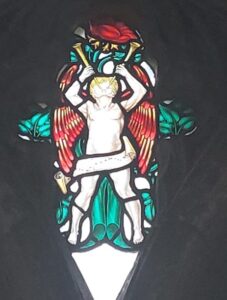So the Gloria from Duruflé’s Messe Cum Jubilo, was once described to me, by someone who presumably was reminded of the cavalry arriving in a Western when he heard it.
Bristol Choral Society presented an all-Duruflé programme at Clifton Cathedral with the composer’s two Mass settings. The Messe Cum Jubilo is for lower voices only, and in fact I don’t think I’d ever heard a performance before. It was more varied than I expected, but always with plainchant lurking in the background.
Then the sopranos and altos returned for his Requiem, a work the choir last sang five years ago, in concert and then on our Portuguese tour. This is by my calculations my fifteenth performance of this piece (by contrast, I have only sung Bach’s B minor Mass twice) and it is rather too easy for me to sing it on autopilot, unless it’s the more colourful version with full orchestra that I’ve done a couple of times. This time it was with organ and cello obbligato for the Pie Jesu.
Clifton Cathedral was warmer than it sometimes is and has been a welcome venue while we haven’t had a concert hall available to us. I arranged things so that I didn’t have to negotiate the spiral staircase down to the Apostles’ Room assigned to the choir, but could simply walk in and out of the building as needed.


